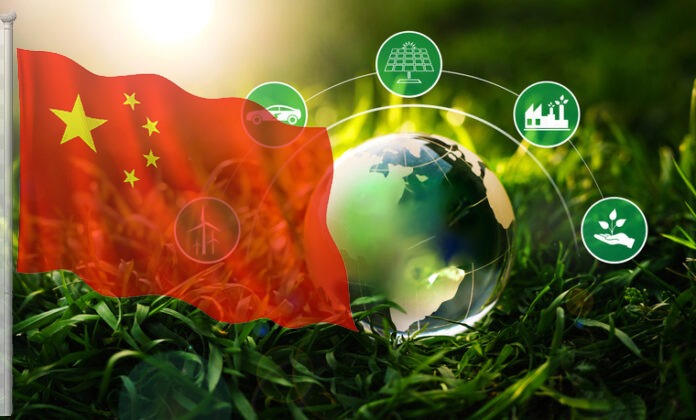China’s Green Investments under the Belt and Road Initiative

China is increasing green investment under the Belt and Road Initiative (BRI), which has always been a priority in projects to promote clean energy and has evolved into a robust framework for promoting green and sustainable development. This commitment to environmental protection and towards a greener future was institutionalized with the establishment of the Belt and Road International Green Development Coalition (BRIGC) during the second Belt and Road Forum in April 2019, aimed at ensuring long-term green and sustainable development aligned with the United Nations Sustainable Development Goals (SDGs). The BRIGC has been instrumental in fostering an environment conducive to green innovation, supported by leading innovative economies and bolstered by enhanced cooperation between China and participating countries in new energy, environmental protection, and green infrastructure.
In mid-2021, China reinforced its green commitment by publishing the “Green Development Guidelines for Overseas Investment and Cooperation” and the “Guidelines for Ecological and Environmental Protection of Foreign Investment Cooperation and Construction Projects,” initiatives that focus on managing environmental risks associated with overseas BRI projects and supply chains, underscoring China’s proactive role in promoting sustainable development. Over the past decade, China has signed 46 climate change-related cooperation documents with 39 developing countries, reflecting a broad consensus on green development among BRI participants.
As the world’s leader in manufacturing clean energy generation facilities for wind and photovoltaic power, China produces over 70 percent of the world’s solar equipment components, including polysilicon, wafers, cells, and modules. Clean energy development positions China as a pivotal force in advancing the global green transition. The nation has engaged in green energy cooperation projects with more than 100 countries and regions, with its investment in green and low-carbon energy in BRI partner countries surpassing investments in traditional energy projects.
As China leverages its renewable energy expertise, it is playing a crucial role in supporting low-carbon transformation in BRI countries over the next decade. This international promotion of green development aligns with China’s vision of contributing to a clean and beautiful world, further embedded in the Belt and Road Initiative’s strategy.
The Green Belt and Road Initiative has been a central focus, driving green and sustainable economic growth among participating countries by promoting energy efficiency and reducing carbon emissions. This facilitates the transition from high-energy input and high-emission developmental models to green growth models. For instance, China’s clean energy projects in Pakistan account for about six percent of the country’s total installed capacity. As China continues to regulate its overseas investments and align its 2060 carbon-neutrality target with the BRI, the experience gained in green investment is expected to be further applied domestically.
The China-Pakistan Economic Corridor (CPEC) has been a catalyst for green transformation in Pakistan, significantly enhancing the country’s energy sector by increasing installed and generating capacity, which includes the operationalization of 12 wind power projects in Thatta, Sindh, with an installed capacity of 610 megawatts, contributing green power to rural households, and supporting socio-economic development. These projects have initiated a process of rural development and transformation, bringing peace and comfort to the lives of common people through social upliftment, poverty eradication, job creation, and the institutionalization of climate-friendly energy sources, mitigating the effects of global warming. The provision of affordable, environment-friendly energy is transforming lives and promoting socio-economic development in Thatta, where more than 100 wind turbines are now operational. These green energy initiatives have become pivotal in advancing social upliftment, eliminating poverty, supporting small and medium enterprises, and generating new jobs for locals.
The China Three Gorges Corporation, a state-owned power company, has funded and built three wind projects in Jhimpir with a combined capacity of nearly 150 MW, further exemplifying China’s commitment to green energy in Pakistan. Additionally, China’s investments in hydroelectric power projects are also enhancing the green transformation in the country.
The Green Silk Road has emerged as a practical solution for realizing the UN’s 2030 Agenda, with China demonstrating a strong commitment to fostering sustainability both domestically and internationally, including the formulation of guiding principles and collaborative agreements to support the Green Silk Road. Accelerating the adoption of green standards, actively promoting domestic green investment standards, participating in the development of international green standards, and facilitating the global dissemination of China’s regulations and standards are crucial steps in this direction. With its advantages in renewable energy, China is well-positioned to contribute significantly more support and impetus for low-carbon transformation in BRI-participating nations in the upcoming decade.
China embeds green development deeply within the BRI framework, ensuring that sustainability remains a cornerstone of its global development strategy, a commitment that is not only transforming the energy landscape of partner countries but also providing further prospects for international cooperation in green innovation and sustainable development.


